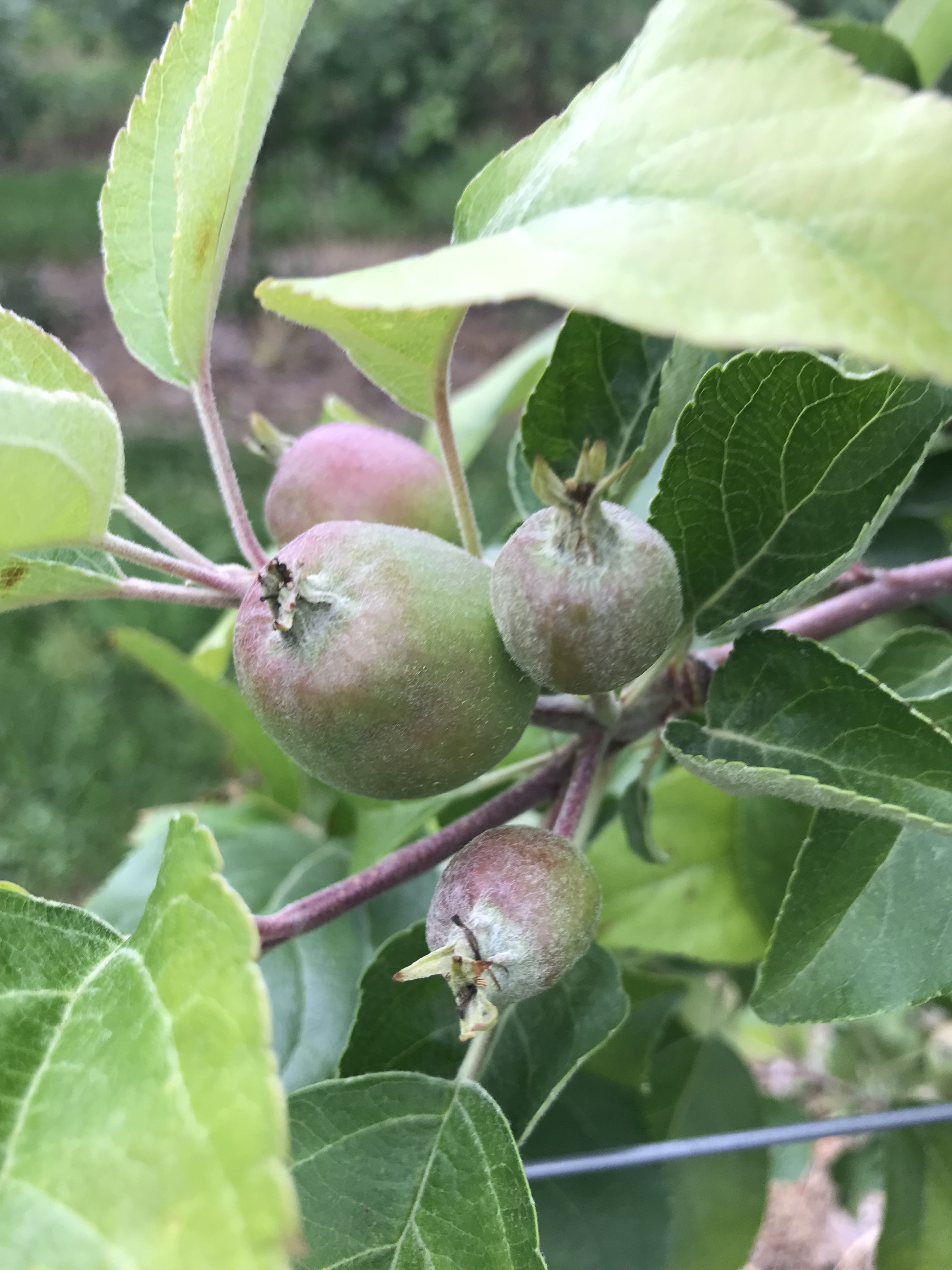Northwest Michigan fruit update – June 21, 2022
The weather is heating up again after a cooler than normal week. Sweet and tart cherries are starting to color. Apple size has increased and is likely too big for further chemical thinning.

Weather report
The weather over the past week has been cool, but this current week has started off very hot. This current heat will be coupled with less humidity than the past hot weather. There is a small chance of a thunderstorm or scattered showers during the evening of June 21 in the northern part of the state. We will continue to see sunshine on Wednesday and Thursday, and temperatures will cool slightly. Thursday is predicted to the coolest day of the week. The next chance of rain will be late on Saturday night, June 25, into Sunday. The medium range forecast is calling for cooler, more seasonal temperatures for the last few days of June into early July.
We have accumulated 1,068 growing degree days (GDD) base 42 and 622 GDD base 50 for the Northwest Michigan Horticulture Research Center (NWMHRC). Our 33-plus-year average is 1,070 GDD base 42 and 606 GDD base 50.
Crop report
Apples have increased in size 3-4 mm and fruit at the NWMHRC is 24-plus mm, so we are out of our thinning window. We still have too many fruit on our trees and will have to hand thin to reduce the crop load. Sweet cherries are starting to color. There is some blush and straw-colored fruit in Montmorency. Strawberry harvest is underway in northwest Michigan.

Pest report
San Jose scale. We caught no San Jose scale again this week. This is two weeks in a row with no San Jose scale adult male flight. Our first catch of males was May 16, and the model predicts crawlers at 400-500 GDD base 51. As of today, June 21, we are at about 400 GDD, so growers with past San Jose scale problems should be treating for crawlers this week.
Lesser peach tree borer. We caught an average of 15.6 lesser peach tree borer this week. Last week, we caught an average of 13 moths and the previous week we caught an average of 16.7 moths.
American plum borer. We caught an average of 2.7 American plum borer moths this week.
Peach tree borer. We caught an average of 4 peach tree borer this week.
Plum curculio. First generation plum curculio have moved into the orchard to oviposit in available fruit. Plum curculio oviposition begins at 290 GDD base 50 and ends at 650 GDD. We are currently at 606 GDD base 50 at the NWMHRC, and likely most PC oviposition is finished for this generation. Based on the plum curculio life cycle, larvae will be in the fruit until 1,200 GDD. Larvae that complete development will drop out and pupate in the soil in the orchard.
Black stem borer. We caught an average of 0.5 black stem borer this week. Growers with black stem borer issues in past should be considering control strategies. Unfortunately, Lorsban is no longer an option for control of this pest. Black stem borer flight for first generation is likely finished.
Codling moth. We caught an average of 1.7 moths on June 13. With the warm temperatures that followed, we checked trap again two days later on June 15, and we caught four, seven and 14 moths in our traps. We checked traps this week on June 20, and we caught an average of 11.7 moths. Our biofix date for codling moth at the NWHRC is June 15. We have accumulated about 100 GDD since biofix, so growers that are applying Rimon need to do soon.
Disease report
Cherry leaf spot. We have had four leaf spot infections this season. However, we have heard reports of active lesions in many commercial blocks. Growers need to continue to protect new tissue from infection to keep leaves on the trees through mid-September. Growers should be careful using copper materials in heat.
American brown rot. We have not observed or heard reports of brown rot this season. However, we have seen a lot of drop and some canker in fruit; both of these scenarios can result in American brown rot infections if we have warm and wet weather. We have seen sporulation on fruit that did not drop in the west central region of the state. “American brown rot has developed strong resistance to Indar in parts of Michigan” is an excellent Michigan State University Extension article on fungicide resistance in American brown rot, and a good reminder that Indar is not an effective material for controlling this disease.
Powdery mildew. Reports of mildew in apple blocks, and some starting to show up in tart cherry.
Apple scab. We have seen apple scab on leaves of commercial blocks this season. We were not expecting to see the lesions as it has been dry with limited rain events. Growers that have scab on their leaves will need to protect fruit. We are so close to the end of primary scab season. The RIMpro model shows no more spores after the next rain event predicted on June 30 (Photo 3). The west central region has not called the end to primary scab, and we are similar in GDD accumulations to them this season: northwest 1,068 GDD base 42 and west central 1,124 GDD base 50. MSU west central caught four spores per rod after this last rain event.




 Print
Print Email
Email
